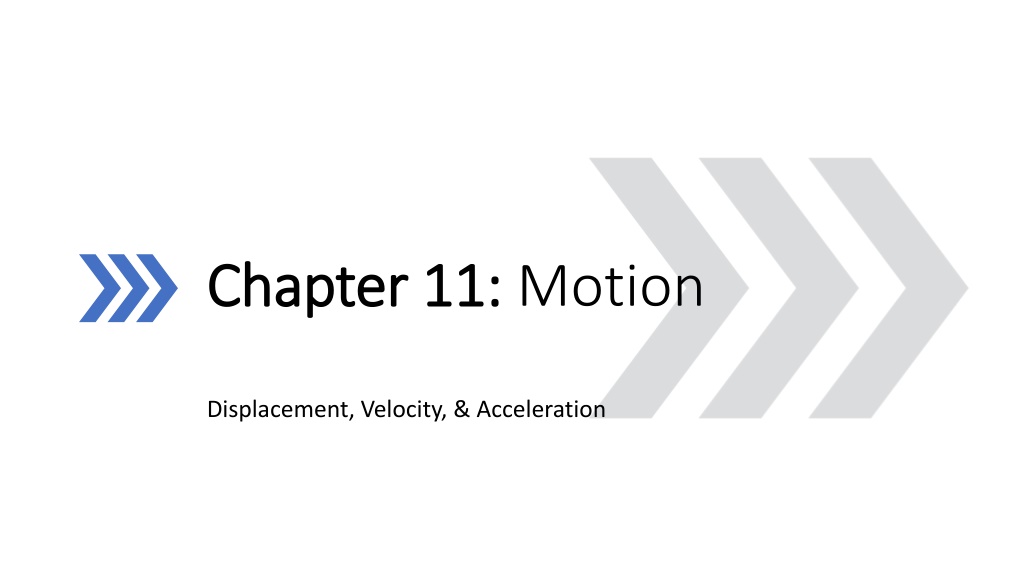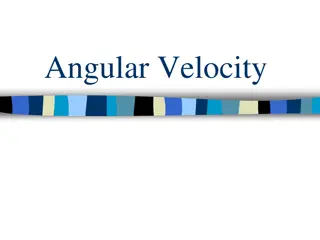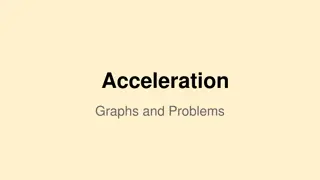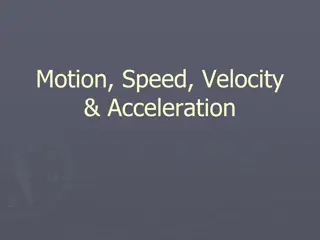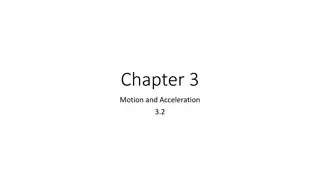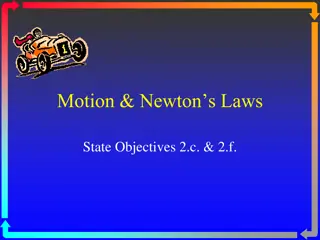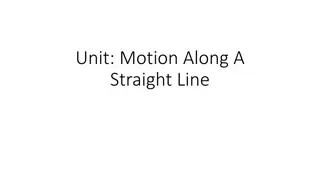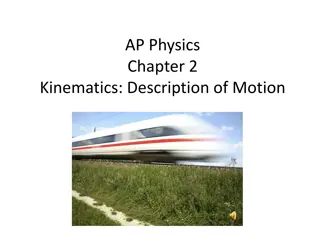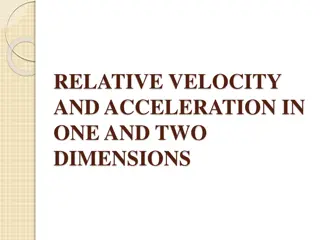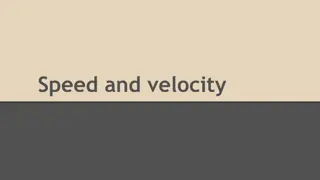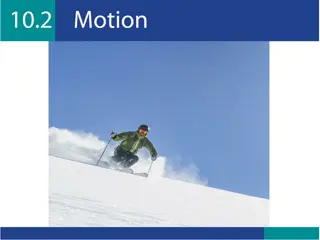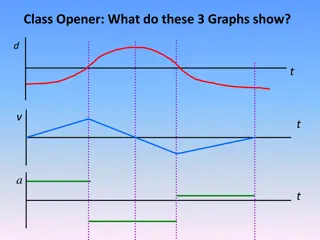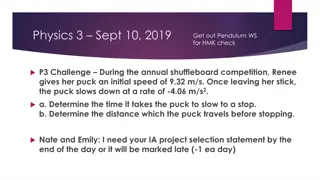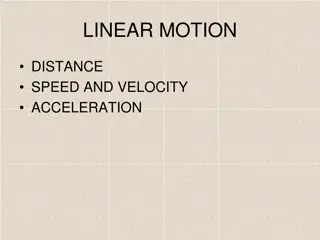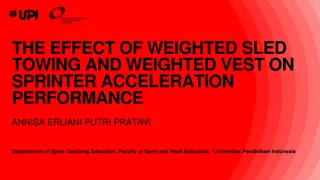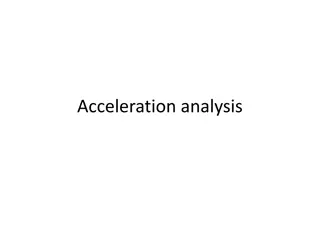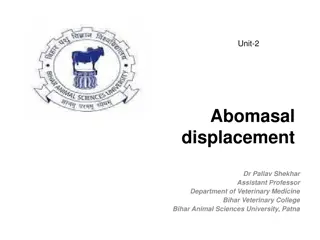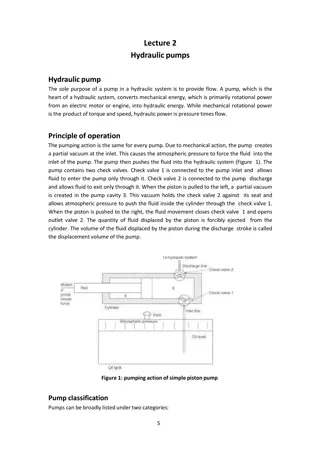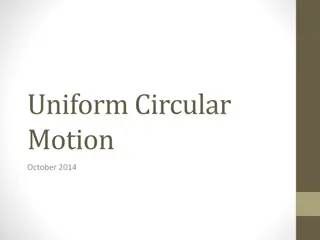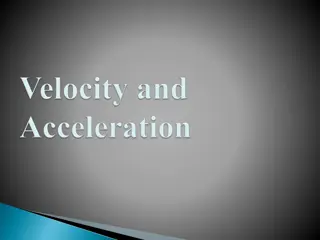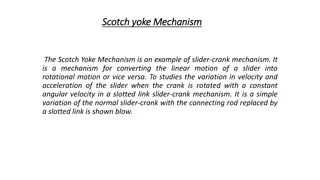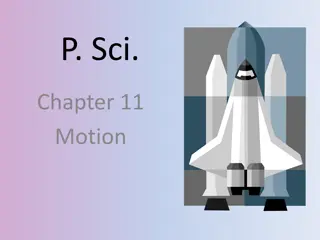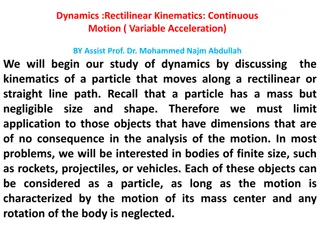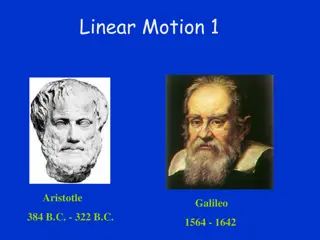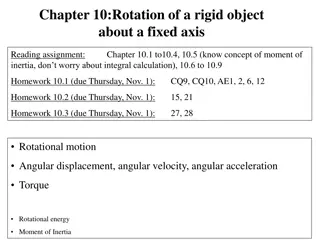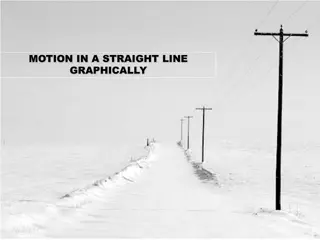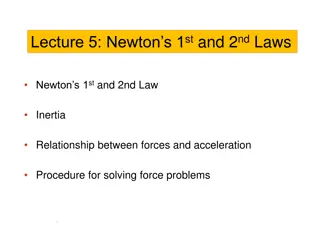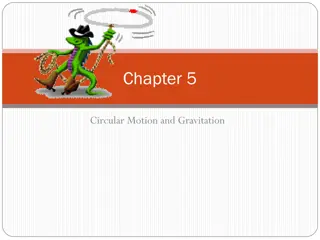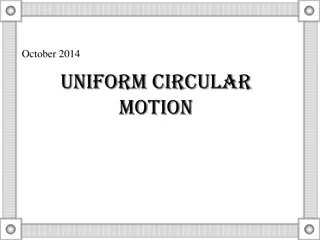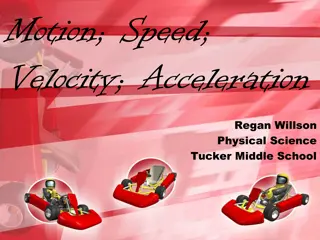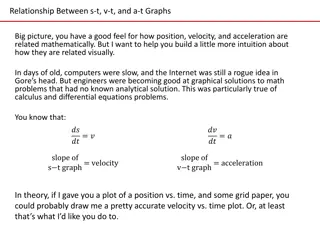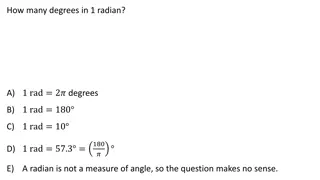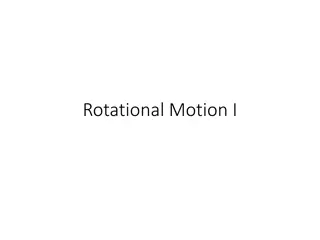Understanding Motion: Displacement, Velocity, and Acceleration
Explore the fundamental concepts of motion, including displacement, velocity, and acceleration. Learn about reference points, distance versus displacement, speed versus velocity, and how to calculate average speed and acceleration. Dive into examples illustrating these concepts in real-world scenarios to deepen your understanding of motion dynamics.
Download Presentation

Please find below an Image/Link to download the presentation.
The content on the website is provided AS IS for your information and personal use only. It may not be sold, licensed, or shared on other websites without obtaining consent from the author. Download presentation by click this link. If you encounter any issues during the download, it is possible that the publisher has removed the file from their server.
E N D
Presentation Transcript
Chapter 11: Chapter 11: Motion Displacement, Velocity, & Acceleration
Opening Questions Opening Questions What is a reference point? What is the difference between distance and displacement? How is the average speed calculated? (formula) What is the difference between speed and velocity? How can you find the average acceleration? (formula)
Reference Point Reference Point: A place or object used for comparison to determine if something is in motion. Examples: Are you moving in your desk right now? Think of a sensor, a phone taking a video.
Frame of reference Example Are these people moving?
Distance vs. Displacement Distance how much ground an object has covered during its motion Displacement How far out of place an object is, change of position Ex: Mr. Wieme walks 4 meters East, 2 meters South, 4 meters West and finally 2 meters North.
Example 2 What is the skier s distance and displacement during the three minutes as the skier moves from A to B to C to D?
Example 3 What is the coach s resulting displacement and distance of travel as he paces back and forth along the sidelines?
Speed Speed=How fast an object is moving. Average Speed = Distance / Time Units?
Velocity The rate at which an object changes its position. Keeps track of the speed AND the direction of travel. Ex: The hurricane is moving at a speed of 10 km/h East Average Velocity = change in position/time or displacement/time
Working with examples of motion A student walks 10 blocks to a computer store, how long will it take him to reach the computer store if he walks 3 blocks in 2 minutes?
Working with examples of motion A student practicing for a track meet ran 250 m in 30 sec. a) What was her average speed? b) If on the following day she ran 300 m in 30 sec, by how much did her speed increase?
Working with examples of motion How fast was the plane flying if it traveled 400 km in 30 minutes?
Working with examples of motion If the average speed of a car is 45 km/hr, how far can it travel in 40 minutes?
Example 1 What is the average speed and average velocity of the skier?
Example 2 What is the coaches average speed and average velocity?
Acceleration Rate at which velocity changes Increasing speed = positive acceleration Ex: A car moving from a stopped position Decreasing Speed = Negative acceleration or deceleration Ex: A jet landing on a runway
Acceleration Example 1 A driver starts his parked car and within 5 seconds reaches a velocity of 54 km/hr as he travels east. What is his acceleration?
Acceleration Example 2 Fallling objects drop with an average acceleration of 9.8 m/sec2. If an object falls from a tall building, how long will it take before it reaches a speed of 49 m/sec?
YILA-Distance and Displacement Anthony walks to the pizza place for lunch. He walk 1 km east, then 1 km south and then 1 km west. What distance did he cover? What was his displacement?
YILA-Distance and Displacement Tara goes on a camel safari in Africa. She travels 5 km north, then 3 km east, 4 km north again, 3 km west. What distance did she cover? What was her displacement?
YILA-Distance and Displacement Chanice drives her scooter 7 kilometres north. She stops for lunch and then drives 5 kilometres east. What distance did she cover? What was her displacement?
YILA-Distance and Displacement Alex goes cruising on his dirt bike. He rides 700 m north, 300 m east, 400 m north, 600 m west, 1200 m south 300 m east and finally 100 m north. What distance did he cover? What was his displacement? (use 1cm = 100m)
YILA-Distance and Displacement On his fishing trip Justin rides in a boat 12 km south. The fish aren t biting so they go 4 km west. They then follow a school of fish 1 km north. What distance did they cover? What was their displacement?
